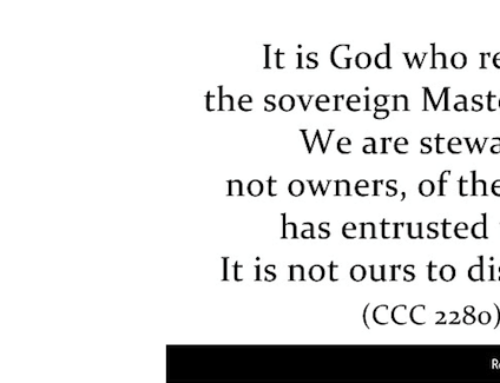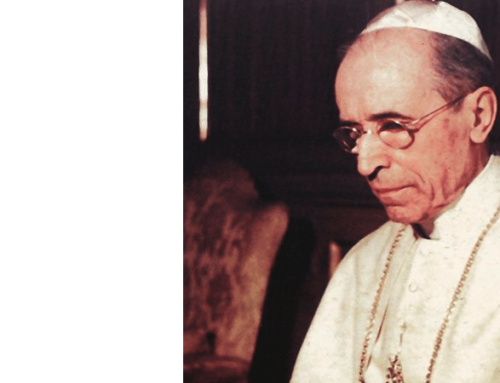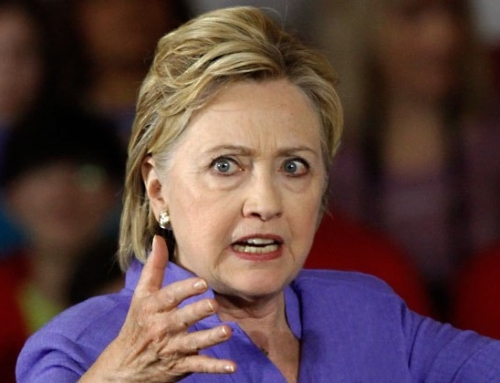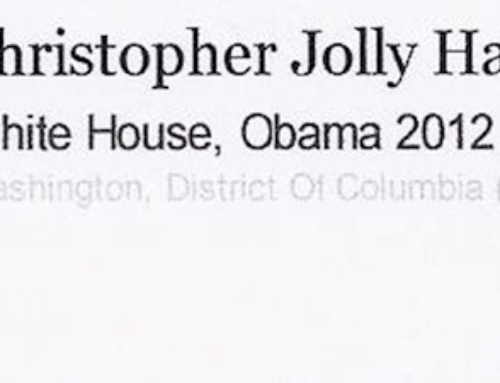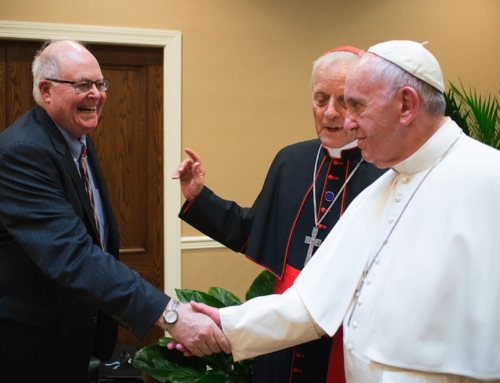by William A. Donohue
(Catalyst 10/2004)
“It is no secret that the Bush administration is engaged in the most radical assault on the separation of church and state in American history.” When I first read that sentence, I wondered about the sanity of the author. Upon reflection, I still do.
Susan Jacoby, who penned that line last spring, is not ready for the asylum, but she is ready to find a home in the asylum’s first cousin—the academy. Indeed, there are few colleges or universities that wouldn’t be proud to hire her. And that is because she entertains a radical secular world-view, one in total harmony with the elites on campus.
The most complete exposition of Jacoby’s work is now available in Freethinkers: A History of American Secularism. For those who believe in nothing, the book is a virtual bible. For the rest of us, it is a useful glimpse into the mind of those who hate religion.
Jacoby would protest this description. She would say she doesn’t hate religion—it’s just the intersection of religion and politics that scares her. But her animus against religion, per se, is so deep that it exposes her hand. For example, it was Bush’s defense of the “sanctity of marriage” in his State of the Union address last January that led Jacoby to accuse him of promoting “the most radical assault on the separation of church and state in American history.” It is fair to say that there is more than just hypersensitivity at play here.
Jacoby knows this country was founded by Christians, but she tries to spin the truth by asserting that the Founders were more interested in separation of church and state than they were religious liberty. In making her case, she entertains the fiction (one that is by now taken as truth by the nation’s most influential constitutional law professors) that there are two clauses in the First Amendment: a religious liberty clause and, its alleged opposite, an establishment clause.
John Noonan is one constitutional scholar who hasn’t accepted this fiction: “There are no clauses in the constitutional provision. Clauses have a subject and a predicate. This provision has a single subject, a single verb, and two prepositional phrases.” Therefore, no calculated disharmony between religious liberty and the establishment of religion was ever contemplated. There was one purpose: to prohibit government interference with religion.
Robert Ingersoll is Jacoby’s hero. Ingersoll was a 19th century agnostic who pioneered the secular humanist agenda in America. The son of a Presbyterian minister, Ingersoll took great pride in helping to achieve what he called one of the greatest victories of the American freethought movement, namely the “secularization of liberal Protestantism.” That he succeeded is disputed by no one, but that it is a plus for America is another matter altogether.
Jacoby’s book is replete with convenient dualisms: the enlightened vs. the indoctrinated; the liberated vs. the enslaved; the tolerant vs. the intolerant, and so forth. This explains her need to rescue the early feminists and the abolitionists from the ranks of the religious.
Jacoby reluctantly admits that the Grimké sisters, Angelina and Sarah, were “deeply religious” 19th-century champions of women’s rights. But she hastens to add, however, that they were also “anticlerical.” Jacoby says the same about feminist Lucretia Mott and abolitionist William Lloyd Garrison. Her point being that it is possible to cast these religiously motivated freedom fighters as secular surrogates. Similarly, Elizabeth Cady Stanton and Susan B. Anthony, two of the most powerful women’s voices of the 19th century, are described as Christians with “unconventional” religious views. And the black abolitionist, Frederick Douglass, is seen as a “devout but unorthodox religious believer.”
In other words, much to Jacoby’s chagrin, the early feminists and the abolitionists were Christians, not so-called freethinkers. Indeed, her characterization of them as independent-minded persons also flies in the face of her stereotype of believers as nothing more than dupes.
This is not to say that some famous public figures cannot be claimed by the secularists. For example, there is the black author and activist, W.E.B. Du Bois, who fought Booker T. Washington in his early days and wound up a Communist at the age of 93. Walt Whitman, the poet and sexual degenerate, was a freethinker whose influence continues to this day; e.g., President Bill Clinton gave a copy of Whitman’s Leaves of Grass to Monica Lewinsky. Margaret Sanger, the ex-Catholic turned racial eugenicist and birth control guru, was a freethinker. Roger Baldwin, founder of the ACLU, was also a freethinker; he called himself an “agnostic Unitarian,” a description that would offend neither agnostics nor Unitarians.
It is not surprising that those who live a life in perpetual rebellion often wind up freethinkers. Angry at the human condition, they see oppression everywhere and salvation nowhere. Save for communism. Jacoby knows that many socialists and communists have claimed residence in her freethinking camp, and for this she is not particularly happy. For example, she confesses that “nearly all socialists were atheists or agnostics,” as were the Social Gospel “Christians” of the 1890s, but she takes pains to distinguish between political radicals and committed freethinkers. The former, she maintains, see “religion as merely one pillar of an unjust society,” one that will collapse with the advent of a truly communist society. The latter, though, regards religion as “the foundation of most other social evils.”
Beginning in the period prior to the First World War, Jews became increasingly involved in radical politics and the secularist movement. Led by “Red Emma” Goldman, agnostic and atheistic Jews took up the cause of communism. Many of the same people played a major role in attacking any vestige of the nation’s religious heritage. To this day, the American Jewish Committee, the American Jewish Congress and the Anti-Defamation League are among the most fierce opponents of the public expression of religion in the U.S. All three are opposed to the words “under God” in the Pledge of Allegiance, though the American Jewish Congress, for purely pragmatic reasons, entered a brief in favor of the Pledge (it did so wholly because it feared a backlash among Christians that might spark the move for a constitutional amendment); the other two Jewish groups entered a brief to remove the words.
Jacoby also cites the role of secular feminists, many of whom are Jewish, in championing the abortion-rights movement. In 1972, in the first edition of Gloria Steinem’s Ms. Magazine, 53 feminists signed a declaration under the headline, WE HAVE HAD ABORTIONS; Steinem was one of the signatories. Today, Jewish newspapers like the Forward are radically in favor of every type of abortion procedure, including partial-birth abortion. Interestingly, one of the Jewish founders of the abortion movement, Dr. Bernard Nathanson, eventually came to his senses and gave up his practice as an abortionist. He has since become an outspoken foe of abortion and has converted to Catholicism (something Jacoby doesn’t mention).
What Jacoby has to say about Catholics is fascinating. She concedes that “in late-nineteenth-century America—for the first time in Western history since the Christianization of the Roman Empire—distrust of the Catholic Church’s intentions was far more widespread than distaste for religious Judaism.” And while she is correct to say that Protestants reacted in horror to the establishment of parochial schools, she fails to say that it was anti-Catholicism that drove Catholics to create their own schools in the first place. What she has a hard time admitting, for understandable reasons, is the role which her beloved freethinkers have played in fostering anti-Catholicism.
In the 1930s, it is fair to say that prominent Catholic public figures were quite vocal in opposing obscene speech. Indeed, the Legion of Decency was very active in monitoring the movie industry. But it is nonetheless striking to read Jacoby speak of “heavily Catholic” places like Pennsylvania, St. Louis, Chicago and New Orleans where obscene fare was challenged. She even goes so far as to say that these are “all cities with Catholic police officials.” One wonders what she would say if a non-Jewish author wrote about “heavily Jewish” places like Hollywood that make the offending movies.
And what are we to make of her claim that the Catholic Church labeled birth control “a communist conspiracy”? Her entire evidence for this extraordinary assertion is the statement of one person, whom she does not identify, who allegedly made such a comment before a congressional committee. Now it may be that some Catholic has testified that the earth is flat. I don’t know. But I know this much—if someone did, Jacoby would blame the Catholic Church.
What is perhaps most disturbing about Jacoby’s treatment of Catholicism is her unwillingness to condemn anti-Catholic authors and organizations. Paul Blanshard, for instance, wrote American Freedom and Catholic Power in the post-war period, a book so laced with anti-Catholicism that the New York Times even refused to review it. This is not the way Jacoby sees it, however, which is why the best she can do is criticize the book for its “shortcomings.” Similarly, she cannot bring herself to condemn Protestants and Other Americans United for Separation of Church and State (now Americans United for Separation of Church and State), even though the organization’s roots are indisputably anti-Catholic.
It would be easy to simply dismiss Jacoby’s book as an attempt to put a rosy gloss on the history of secularism in the U.S. But it is more than that—it is a window into the way freethinkers see themselves and others. Their window, unfortunately, has been dirtied by ideology and made small by experience. Worst of all, theirs is a window that projects an incredible self-righteousness, one whose only cure lies in listening to the Word of God.




